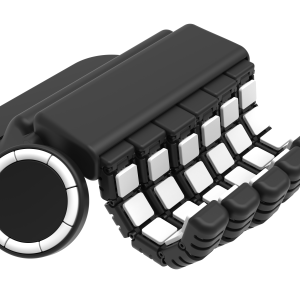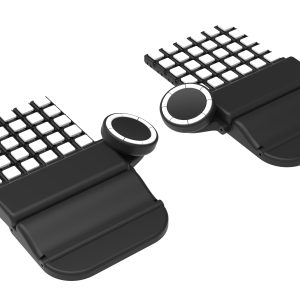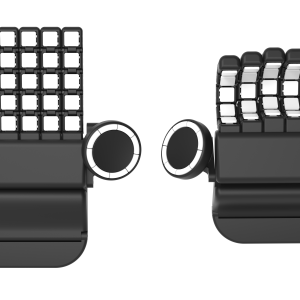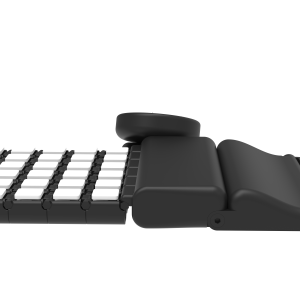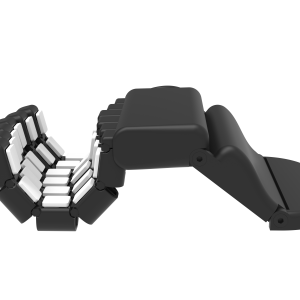Project Title: CHIROTYPE: Improving Ergonomics & Semiotics of Human–Computer Input
Product Name: Chirotype
Topic/Problem Description:
Repetitive strain injury (RSI) is a generic term encompassing several painful musculoskeletal disorders caused by repetitively straining activities, such as manual labor, industrial work, sports, and computer use. RSI can develop slowly or quickly, can cause specific or diffuse pain, and can require various levels of treatment—from temporarily reducing the repetitive activity, to medication, to surgery as a last resort. If left untreated, RSI can develop into permanent disability. RSI is a growing problem, correlating with the increasing ubiquity of computers in the workplace. Computer users are at significant risk of developing RSI, considering that taking frequent breaks is often discouraged in the workplace, and RSI can take years to develop—meaning people don’t notice the symptoms until it’s too late.
If reducing repetitive activity is not an option (as is often the case when your livelihood depends on it, such as computer use), reducing strain by optimizing ergonomics can prevent RSI. But standard computer keyboards were designed arbitrarily, with no regard for ergonomics, and they have remained largely unchanged since the 1870s with the first typewriters. The biggest problem that redesigned ergonomic keyboards face on the market is that users are reluctant to face steep learning curves. The more ergonomic features are added, the more alienating the design will be to new users. “How can a human–computer input device be designed to reduce a user’s risk of RSI while not alienating them?”
Solution:
Chirotype is a transformable ergonomic human–computer input device that combines the functionality of a keyboard and pointing device. I sought to explore the concepts of tools that “break in” and mold to the user with frequent use, and the idea that interfacing with the device should be as seamless as holding a hand. To achieve this, Chirotype transforms from a flat configuration (not too dissimilar to a standard keyboard), and as a new user becomes accustomed to it, they can adjust the position of each “finger” to increase the device’s ergonomics.
Additionally, integrating a trackpad beneath the thumb eliminates the repetitive strain of reaching for a mouse or other pointing device, while the buttons surrounding it account for the relative difference in each finger’s strength (the thumb is the strongest finger, and thus should be assigned the greatest load).
Chirotype aims to combat the stagnation of the current computer keyboard market as a view of “what could be”. The result is a unique human–computer input device which addresses RSI and user-approachability in an entirely new way.

